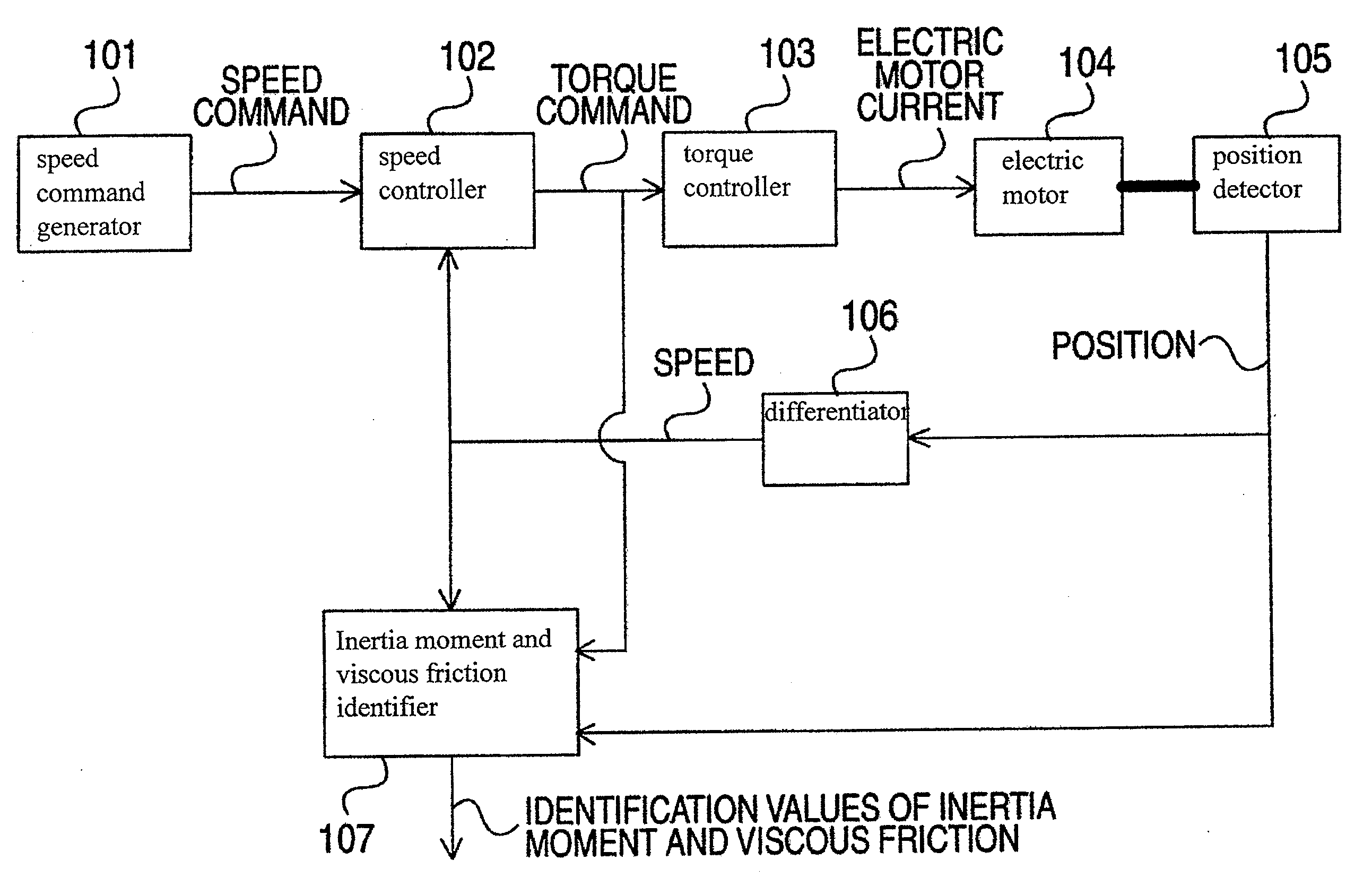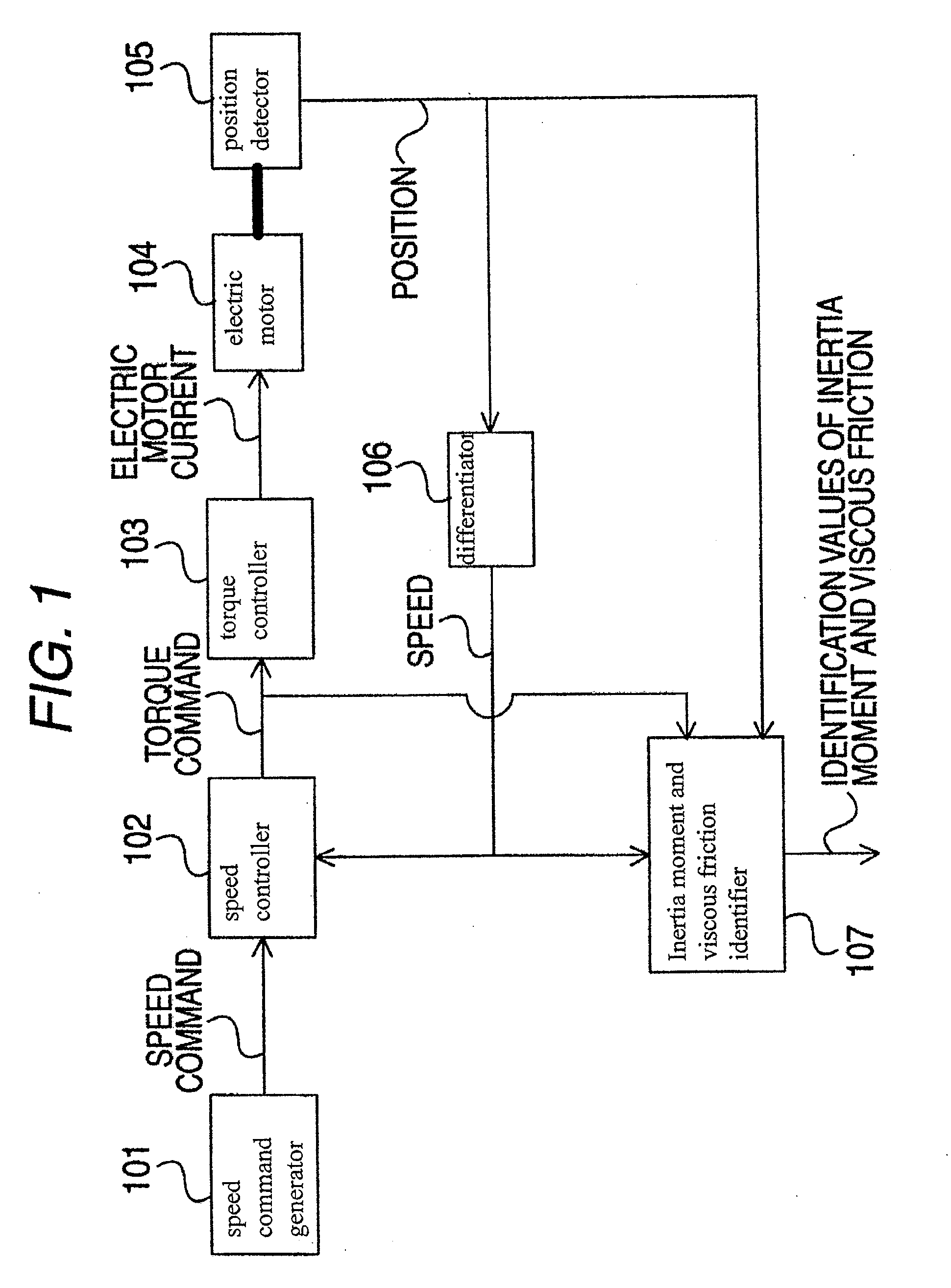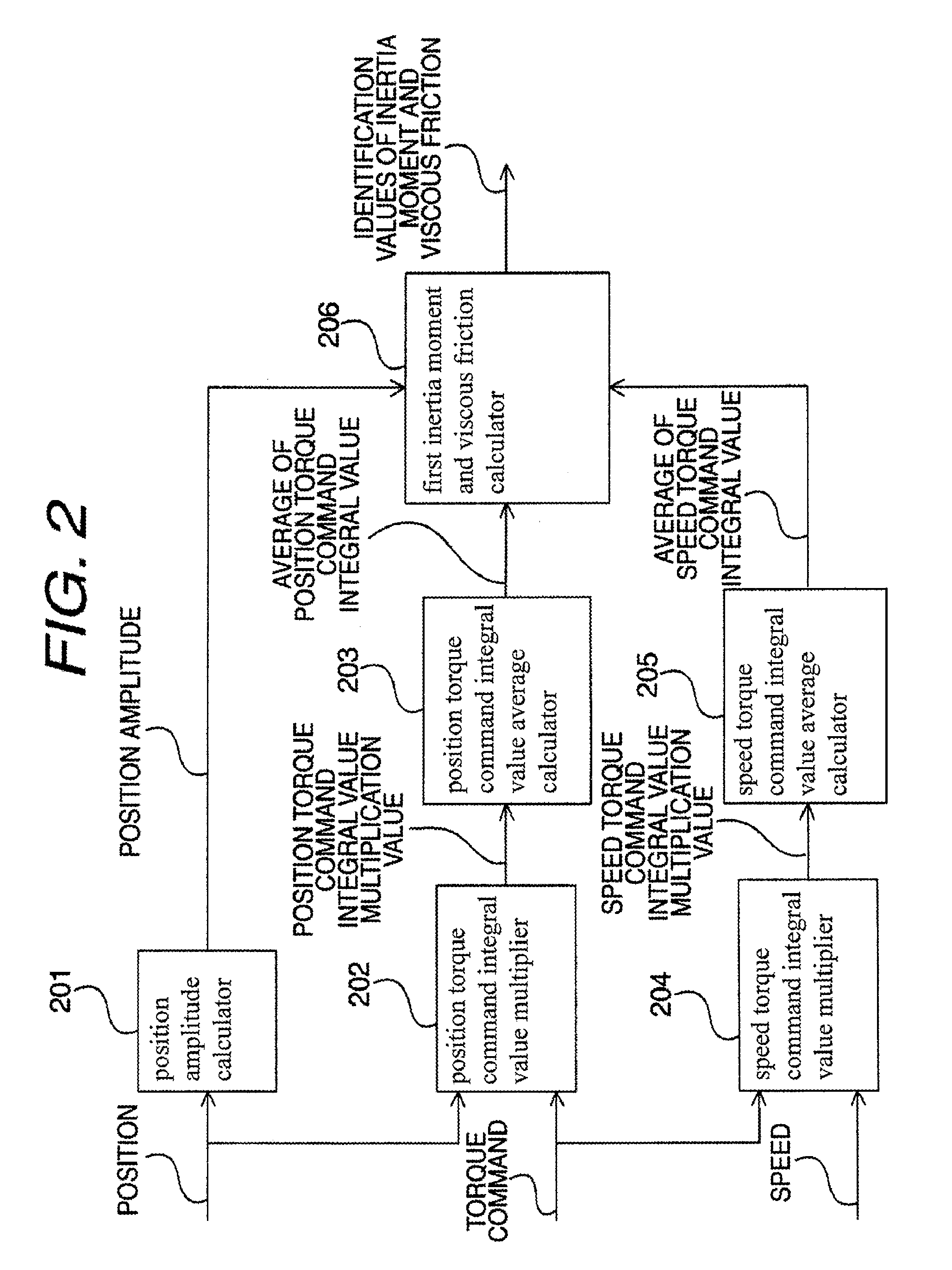System identification device
a technology of system identification and identification device, which is applied in the direction of adaptive control, force/torque/work measurement apparatus, instruments, etc., can solve the problem of inability to identify the restricted movement range, and achieve the effect of suppressing the influence, small operation, and suppressing the influence of constant torque disturban
- Summary
- Abstract
- Description
- Claims
- Application Information
AI Technical Summary
Benefits of technology
Problems solved by technology
Method used
Image
Examples
first example
[0125]FIG. 1 is a block diagram showing a system identification device according to a first example.
[0126]In FIG. 1, 101 denotes a speed command generator, 102 denotes a speed controller, 103 denotes a torque controller, 104 denotes an electric motor, 105 denotes a position detector, 106 denotes a differentiator, and 107 denotes an inertia moment and viscous friction identifier.
[0127]A structure of the system identification device in the first example will be described below with reference to FIG. 1.
[0128]The speed command generator 101 outputs a speed command. The speed controller 102 inputs the speed command and a speed and then outputs a torque command. The torque controller 103 inputs the torque command and then outputs an electric motor current. The electric motor 104 is driven with the electric motor current and the position detector 105 detects and outputs a position thereof. The differentiator 106 inputs the position and then outputs the speed. The inertia moment and viscou...
second example
[0151]FIG. 3 is a block diagram showing a system identification device according to a second example.
[0152]In FIG. 3, 102 denotes a speed controller, 103 denotes a torque controller, 104 denotes an electric motor, 105 denotes a position detector, 106 denotes a differentiator, 107 denotes an inertia moment and viscous friction identifier, 301 denotes a position command generator, and 302 denotes a position controller.
[0153]A structure of the system identification device according to the second example will be described below with reference to FIG. 3.
[0154]The position command generator 301 outputs a position command. The position controller 302 inputs the position command and a position and then outputs a speed command. The speed controller 102 inputs the speed command and a speed and then outputs a torque command. The torque controller 103 inputs the torque command and then outputs an electric motor current. The electric motor 104 is driven with the electric motor current, and the p...
third example
[0168]The third example is different from the first and second examples in that the third example employs a structure in which a position torque command integral value multiplier 202 and a speed torque command integral value multiplier 204 use a 1st-order time integral value of a torque command in place of a 0th-order time integral value of the torque command. Since other structures are the same as those in the first and second examples, description thereof will be omitted.
[0169]First of all, the principle of the example will be described with reference to FIGS. 1, 2 and 3.
[0170]An equation of motion of an open loop system including a torque controller 103, an electric motor 104 and a position detector 105 is represented by the Equation (7) according to the first example, where an inertia moment of the electric motor 104 is represented by J, a viscous friction is represented by D, a torque command is represented by Tref, a constant torque disturbance is represented by w and a posit...
PUM
| Property | Measurement | Unit |
|---|---|---|
| viscous friction | aaaaa | aaaaa |
| viscous friction | aaaaa | aaaaa |
| speed | aaaaa | aaaaa |
Abstract
Description
Claims
Application Information
 Login to View More
Login to View More - R&D
- Intellectual Property
- Life Sciences
- Materials
- Tech Scout
- Unparalleled Data Quality
- Higher Quality Content
- 60% Fewer Hallucinations
Browse by: Latest US Patents, China's latest patents, Technical Efficacy Thesaurus, Application Domain, Technology Topic, Popular Technical Reports.
© 2025 PatSnap. All rights reserved.Legal|Privacy policy|Modern Slavery Act Transparency Statement|Sitemap|About US| Contact US: help@patsnap.com



